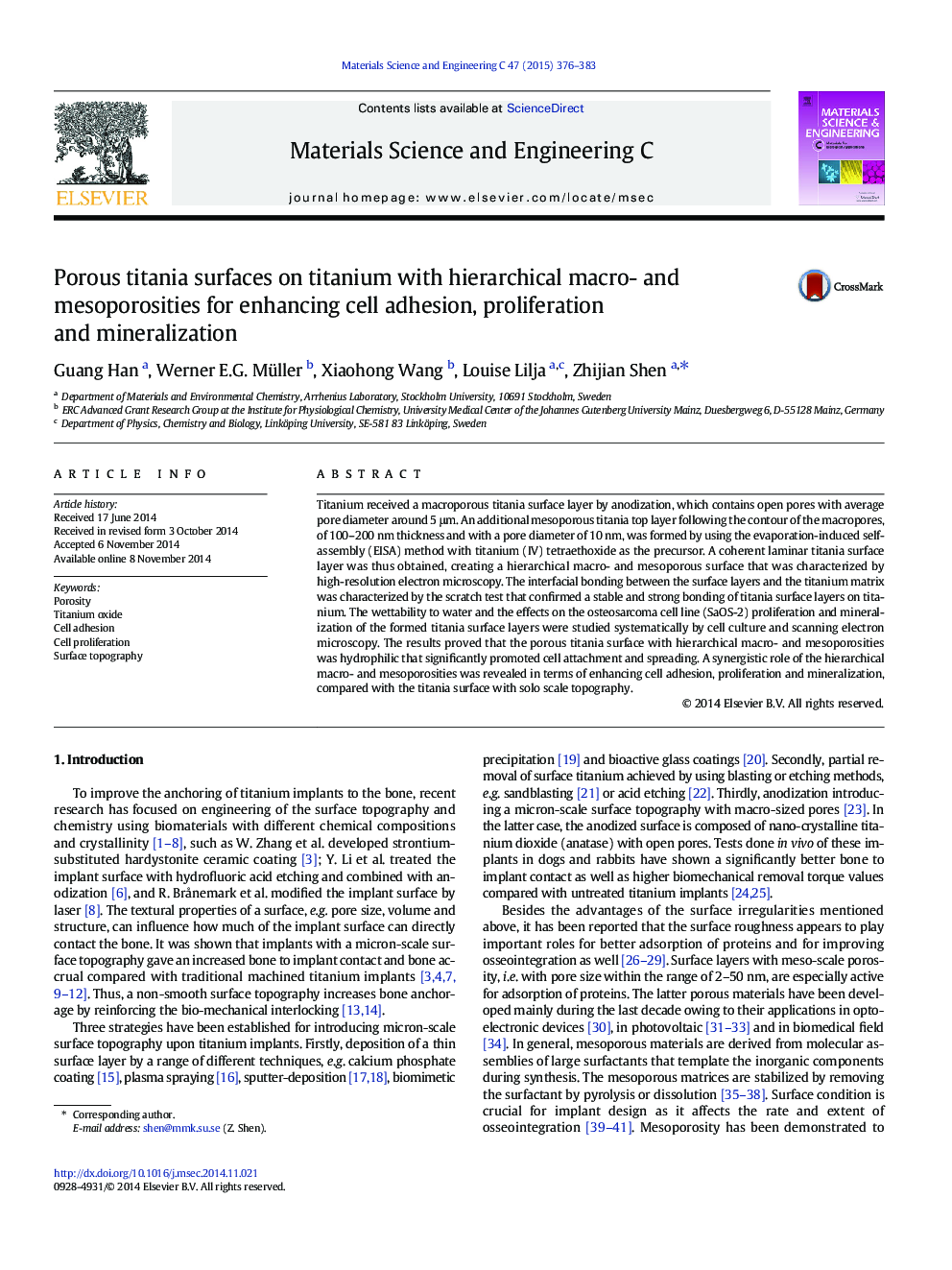| Article ID | Journal | Published Year | Pages | File Type |
|---|---|---|---|---|
| 1428414 | Materials Science and Engineering: C | 2015 | 8 Pages |
•We developed a hierarchical macro- and mesoporous surface layer on titanium.•New surface layer was strong enough to sustain on implant surface.•New surface owned better surface wettability.•New surface can promote SaOS-2 cell adhesion, proliferation and mineralization.•Synergistic effects on cell responses occur when two porous structures coexist.
Titanium received a macroporous titania surface layer by anodization, which contains open pores with average pore diameter around 5 μm. An additional mesoporous titania top layer following the contour of the macropores, of 100–200 nm thickness and with a pore diameter of 10 nm, was formed by using the evaporation-induced self-assembly (EISA) method with titanium (IV) tetraethoxide as the precursor. A coherent laminar titania surface layer was thus obtained, creating a hierarchical macro- and mesoporous surface that was characterized by high-resolution electron microscopy. The interfacial bonding between the surface layers and the titanium matrix was characterized by the scratch test that confirmed a stable and strong bonding of titania surface layers on titanium. The wettability to water and the effects on the osteosarcoma cell line (SaOS-2) proliferation and mineralization of the formed titania surface layers were studied systematically by cell culture and scanning electron microscopy. The results proved that the porous titania surface with hierarchical macro- and mesoporosities was hydrophilic that significantly promoted cell attachment and spreading. A synergistic role of the hierarchical macro- and mesoporosities was revealed in terms of enhancing cell adhesion, proliferation and mineralization, compared with the titania surface with solo scale topography.
